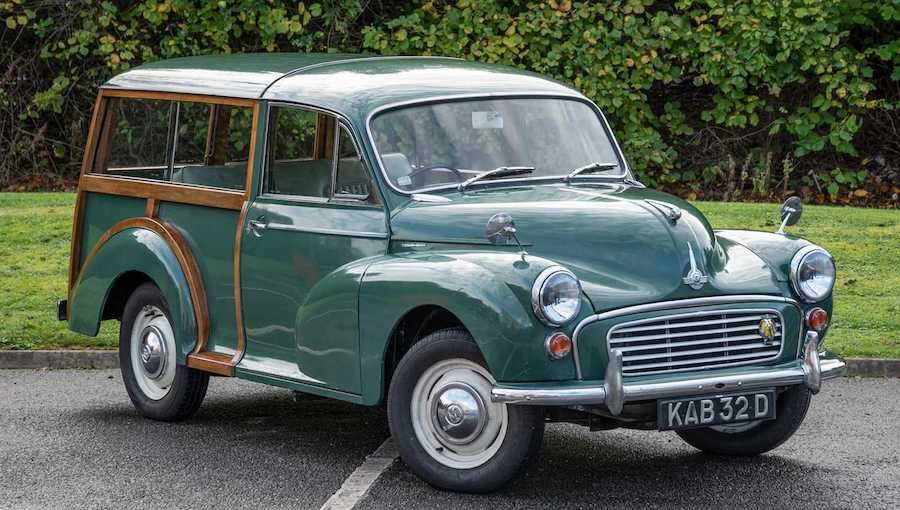A bold Anglo-Chinese MG Rover revival plan to resurrect the Morris Minor came within an ace of succeeding back in 2005.
The scheme was developed in the immediate aftermath of MG Rover’s bankruptcy in April 2005 and led by late former Ford of Europe and Maserati boss Martin Leach’s Magma Holdings consultancy and Shanghai Automotive Industries Corporation (SAIC).
It was one of three competing bids for the remains of MG Rover, which included the hardware to manufacture the Rover 25, 45 and 75 models, as well as the K Series engine.
The Minor element of the plan has only now emerged via your reporter, who was confidentially party to some details of the proposal at the time. The car wasn’t detailed in the Magma-SAIC bid, presumably because Leach didn’t want any competitors to get wind of it.
Indeed, Steve Young of Indego Consulting, then a key collaborator with Leach, says the Minor revival idea “was something Martin came up with – I wasn’t aware of it”.
Young’s specialism was more on business, rather than product planning. Nevertheless, it’s likely that the new Minor would have been central to MG Rover’s revival under Leach.
The Magma bid, backed by China’s biggest car maker (which now owns MG Motor, of course), had real credibility, thanks to a combination of factors: Leach’s impressive industry career; the backing of a company already familiar with MG Rover; SAIC having been in serious negotiations to buy the company before it went under; and the support of Unite consultant and former union leader Tony Woodley.
Young says: “SAIC would have done all the engineering work with input from the UK. They had the capability. General Motors [which has a sizeable joint venture with SAIC] had supported them heavily with an engineering centre and were very generous in getting them up to speed.”
The SAIC plan included new monospace mini, medium and large platforms, and it was onto the smallest of these that the Minor would likely have been built, powered by the K Series engine.
The successful bidder stood to gain the rights to not only the MG and Rover names but also Morris and Austin. Reviving the Minor was far from outlandish.
Retro cars were heavily in vogue during the early 2000s – think the Volkswagen Beetle, BMW Mini, Fiat 500 and Ford Mustang – and the surprise return of a famous, much-loved model name would have added real impetus to the rebirth of the business.
As would adding a Minor Traveller estate, with four doors and a split barn-door tailgate, along with a Minor convertible.
In the event, it was Nanjing Automobile Corporation of China that won, despite it being a much smaller firm than SAIC and ultimately a far less credible buyer. But it bid higher and without conditions. There was also a UK consortium, this probably the least credible option.
Young believes that Nanjing had bid as a means of drawing SAIC’s attention, having previously failed to persuade the larger firm to take it over. He recalls being invited to Longbridge with Leach shortly after it won the bid, and the pair asked what they thought Nanjing should do now.
They didn’t get involved, and ultimately the Chinese government pushed the two companies to merge in 2007. It made sense; SAIC had acquired the intellectual rights to the Rover 75, 45 and 25 the previous year, when MG Rover was still a going concern.
How the news scoop came to be
It came, as many of life’s most exciting opportunities do, with a phone call. The call was confidential, said the voice, so I left Autocar’s offices and aimlessly wandered the local streets while Martin Leach, one-time boss of Ford of Europe and subsequently Maserati, explained to me that he was putting a bid together for the MG Rover operation.
This was a couple of months after the company had collapsed in April 2005. Why was he telling me? Because he knew Autocar would be interested – to say the least – in running a story about his plan, and, if it was successful, the magazine would doubtless have followed his efforts to revive the company.
But there was another dimension to his call. Leach and your reporter had become friendly during his legal fight with Ford over unfair dismissal, and he would occasionally feed Autocar snippets on a case that he eventually won.
I had met him on launches, too, and when he headed up Maserati, not least because my then wife worked in the UK for the company. Leach knew that I had once worked for Austin Rover and of my interest in the company and its subsequent iterations. He was keen to meet.
We did, several times, at a pub in Chelsea, London. This was during June and July 2005, when his consultancy Magma Holdings and SAIC were developing their bid. Leach was also in touch with Unite union chairman Tony Woodley, who was keen on the Magma-SAIC initiative, because it promised to maximise job preservation at Longbridge.
On one occasion, Woodley called during a dinner with Leach, rendering your reporter slightly amazed to be witnessing the machinations of what might have been a spectacular rescue for MG Rover. Sadly, none of this was reportable at the time.
Nor was Leach’s inspired plan to revive the Minor, which I thought was brilliant and surely the best chance this troubled business had of reinvigorating itself. Leach had overseen the birth of many Ford and Mazda models in his senior roles, which all added considerable credibility to the plan.
There was never enough time to discuss the finer details of how the Minor would be realised or what Leach envisaged beyond it. Nor did we discuss what my role might be should the deal come off. Had it done so, I would likely have been off to Birmingham.

